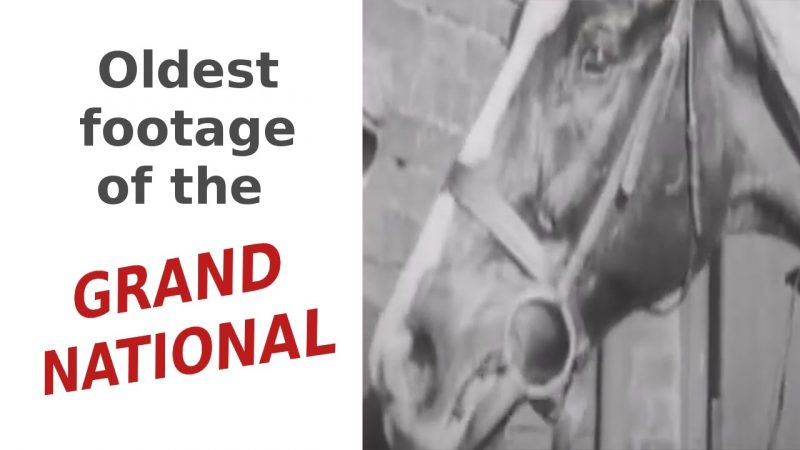The Grand National is a National Hunt horse race held annually at Aintree Racecourse in Liverpool, England. First run in 1839, it is a handicap steeplechase over 4 miles 3½ furlongs (7.141 km) with horses jumping 30 fences over two laps. It is the most valuable jump race in Europe, with a prize fund of £1 million in 2015
The course over which the race is run features much larger fences than those found on conventional National Hunt tracks. Many of these, particularly Becher’s Brook, The Chair and the Canal Turn, have become famous in their own right and, combined with the distance of the event, create what has been called “the ultimate test of horse and rider”.
The Grand National has been broadcast live on free-to-air terrestrial television in the United Kingdom since 1960.
The video below that we found at Yestervid he footage is dated 24 March 1911.

The Grand National was founded by William Lynn, a syndicate head and proprietor of the Waterloo Hotel, on land he leased in Aintree from William Molyneux, 2nd Earl of Sefton. Lynn set out a course, built a grandstand, and Lord Sefton laid the foundation stone on 7 February 1829.There is much debate regarding the first official Grand National; most leading published historians, including John Pinfold, now prefer the idea that the first running was in 1836 and was won by The Duke.This same horse won again in 1837, while Sir William was the winner in 1838. These races have long been disregarded because of the belief that they took place at Maghull and not Aintree. However, some historians have unearthed evidence in recent years that suggest those three races were run over the same course at Aintree and were regarded as having been Grand Nationals up until the mid-1860s. Contemporary newspaper reports place all the 1836-38 races at Aintree although the 1839 race is the first described as “national”.To date, though, calls for the Nationals of 1836–1838 to be restored to the record books have been unsuccessful. The Duke was ridden by Martin Becher. The fence Becher’s Brook is named after him and is where he fell in the next year’s race.
In 1838 and 1839 three significant events occurred to transform the Liverpool race from a small local affair to a national event. Firstly, the Great St. Albans Chase, which had clashed with the steeplechase at Aintree, was not renewed after 1838,leaving a major hole in the chasing calendar. Secondly, the railway arrived in Liverpool, enabling transport to the course by rail for the first time. Finally, a committee was formed to better organise the event. These factors led to a more highly publicised race in 1839 which attracted a larger field of top quality horses and riders, greater press coverage and an increased attendance on race day. Over time the first three runnings of the event were quickly forgotten to secure the 1839 race its place in history as the first official Grand National. It was won by rider Jem Mason on the aptly named, Lottery.
By the 1840s, Lynn’s ill-health blunted his enthusiasm for Aintree. Edward Topham, a respected handicapper and prominent member of Lynn’s syndicate, began to exert greater influence over the National. He turned the chase into a handicap in 1843 after it had been a weight-for-age race for the first four years, and took over the land lease in 1848. One century later, the Topham family bought the course outright.
Later in the century the race was the setting of a thriller by the popular novelist Henry Hawley Smart.
